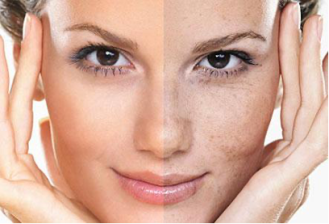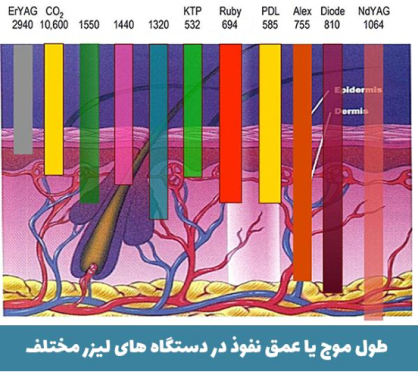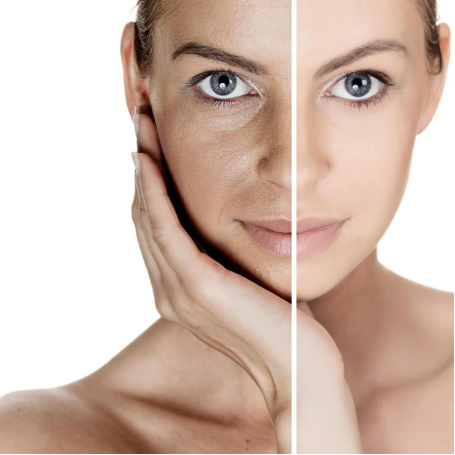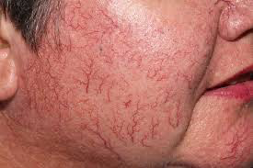لیزر درمانی پیشرفته: راهی نوین برای زیبایی و جوانسازی پوست شما
در دنیای امروز، داشتن چهرهای جوان، پوستی شاداب و اندامی متناسب، نقش مهمی در افزایش اعتماد به نفس و موفقیتهای فردی و اجتماعی ایفا میکند. به همین دلیل، روشهای نوین زیبایی و جوانسازی، به ویژه لیزر درمانی، با استقبال گستردهای روبرو شدهاند. کلینیک تخصصی پوست و زیبایی دکتر بیتا ساقی با بهرهگیری از دانش روز و پیشرفتهترین دستگاههای لیزر، طیف وسیعی از خدمات درمانی و زیبایی را برای پاسخگویی به نیازهای شما عزیزان ارائه میدهد.
همین امروز برای مشاوره تخصصی و دریافت برنامه درمانی منحصر به فرد خود اقدام کنید!
تعریف لیزر درمانی و اصول آن
واژه لیزر (Laser) مخفف عبارت انگلیسی "Light Amplification by Stimulated Emission of Radiation" به معنای «تقویت نور به روش گسیل القایی تابش» است. لیزر در واقع نوری تکرنگ، بسیار پرانرژی و کنترلشده است که با دقتی فوقالعاده بالا، کاربردهای فراوانی در علم پزشکی و بهویژه در حوزه پوست و زیبایی پیدا کرده است.

برخلاف نور معمولی (مانند نور مورد استفاده در سیستمهای IPL که طیف وسیعی از طول موجها را شامل میشود)، نور لیزر دارای سه ویژگی منحصربهفرد است:
- تک طول موج (Monochromatic): لیزر تنها از یک طول موج مشخص (یک رنگ خالص) تشکیل شده است. این ویژگی امکان هدفگیری دقیق ساختارهای خاص در پوست (مانند رنگدانه ملانین در مو یا هموگلوبین در عروق) را فراهم میکند.
- همراستا (Collimated): پرتوهای نور لیزر به صورت موازی حرکت میکنند و واگرا نمیشوند، که باعث تمرکز انرژی در یک نقطه مشخص میشود.
- منسجم (Coherent): امواج نوری لیزر همفاز هستند و با هم حرکت میکنند، که منجر به افزایش شدت و انرژی پرتو میشود.
انواع مختلفی از لیزرها با طول موجهای متفاوت وجود دارند که هر کدام برای کاربرد خاصی مناسب هستند. الکساندرایت (Alexandrite)، اِن دی یَگ (Nd:YAG) و CO2 از پرکاربردترین انواع لیزر در حوزه پوست و زیبایی محسوب میشوند.
کاربردهای گسترده لیزر درمانی: فراتر از زیبایی
فناوری لیزر به دلیل دقت و اثربخشی بالا، کاربردهای بسیار متنوعی در درمان مشکلات پوستی و بهبود ظاهر دارد. پرکاربردترین موارد استفاده از لیزر عبارتند از:
- رفع موهای زائد: یکی از محبوبترین کاربردهای لیزر برای حذف دائمی یا طولانیمدت موهای ناخواسته در نواحی مختلف بدن.
- جوانسازی پوست: کاهش چین و چروک، بهبود بافت و قوام پوست، افزایش شفافیت و درخشندگی.
- رفع لکهها و ضایعات پیگمانته: درمان انواع لکهای ناشی از آفتاب، افزایش سن (Age spots)، کک و مک و برخی انواع خالهای سطحی.
- درمان ضایعات عروقی: حذف رگهای عنکبوتی صورت و پا، درمان ماه گرفتگیهای قرمز (Port-wine stains) و بیماری روزاسه.
- بهبود جای زخم و اسکار: کاهش ظاهر اسکارهای ناشی از آکنه، جراحی یا سوختگی.
- درمان برخی بیماریهای پوستی: کمک به درمان زگیل، برخی عفونتهای قارچی ناخن و مشکلات دیگر با تشخیص پزشک.
- حذف تاتو (خالکوبی): کمرنگ کردن یا پاک کردن کامل تاتوها با استفاده از لیزرهای تخصصی (توجه: این خدمت ممکن است در هر کلینیکی ارائه نشود).
فواید کلیدی لیزر درمانی مدرن
استفاده از لیزر در درمانهای پوستی مزایای قابل توجهی نسبت به روشهای قدیمیتر دارد:
- دقت بسیار بالا: لیزر به طور دقیق بافت هدف (مانند فولیکول مو یا رنگدانه) را مورد اصابت قرار میدهد و آسیب به بافتهای اطراف را به حداقل میرساند.
- اثربخشی قابل توجه: نتایج درمانهای لیزری، بهویژه در رفع موهای زائد و ضایعات عروقی و پیگمانته، معمولاً بسیار رضایتبخش و طولانیمدت است.
- دوره نقاهت کوتاهتر (در بسیاری از موارد): بسیاری از لیزرهای غیرتهاجمی یا کمتهاجمی دوره نقاهت بسیار کوتاهی دارند یا اصلاً نیازی به استراحت پس از درمان ندارند.
- تحریک کلاژنسازی: لیزرهای جوانسازی با تحریک فیبروبلاستها، به تولید کلاژن و الاستین جدید کمک کرده و باعث بهبود طبیعی قوام و ظاهر پوست میشوند.
- تنوع در درمان: وجود انواع مختلف لیزرها و تکنولوژیهای وابسته، امکان انتخاب بهترین روش درمانی متناسب با نوع پوست و مشکل فرد را فراهم میکند.
انواع لیزر و تکنولوژیهای نوین برای جوانسازی و زیبایی در کلینیک دکتر بیتا ساقی
انتخاب دستگاه و تکنولوژی مناسب، کلید دستیابی به بهترین نتیجه در لیزر درمانی است. در کلینیک دکتر بیتا ساقی، ما با بهرهگیری از مجموعهای از پیشرفتهترین دستگاههای لیزر و انرژیمحور، قادر به ارائه برنامههای درمانی کاملاً شخصیسازی شده هستیم:

- دستگاه الیت پلاس (Elite+) سایناشور آمریکا: این دستگاه پیشرفته به عنوان یکی از استانداردهای طلایی در لیزر درمانی شناخته میشود و با داشتن دو طول موج الکساندرایت (۷۵۵ نانومتر) و اِندییاگ (۱۰۶۴ نانومتر)، قابلیتهای درمانی فوقالعادهای دارد. از این دستگاه برای رفع موهای زائد در تمام تایپهای پوستی (از روشن تا تیره و برنزه)، رفع لکهای سطحی و درمان ضایعات عروقی استفاده میشود. همچنین لیزر اندییاگ آن برای جوانسازی غیرتهاجمی کاربرد دارد.
- لیزر CO2 فرکشنال: این لیزر یکی از قدرتمندترین ابزارها برای جوانسازی عمیق پوست است. با ایجاد آسیبهای میکروسکوپی کنترلشده در پوست، باعث تحریک شدید کلاژنسازی شده و برای درمان چین و چروکهای عمیق، اسکارهای آکنه، منافذ باز و بهبود کلی بافت پوست بسیار مؤثر است.
- آر اف فرکشنال (RF Fractional) مانند اینتراسل (Intracel): این تکنولوژی از امواج رادیوفرکوئنسی (RF) استفاده میکند که از طریق سوزنهای بسیار ظریف (میکرونیدلینگ) به لایههای عمیقتر پوست منتقل میشود. انرژی RF باعث ایجاد گرما و تحریک کلاژنسازی میشود. این روش برای سفت کردن پوست، بهبود بافت، درمان اسکارهای آکنه و کاهش منافذ باز بسیار مؤثر است و دوره نقاهت کوتاهی دارد.
- هایفوتراپی (HIFU): هایفو از امواج اولتراسوند متمرکز با شدت بالا برای هدف قرار دادن لایههای عمقی پوست و حتی لایه SMAS (لایهای که در جراحی لیفت صورت کشیده میشود) استفاده میکند. این روش باعث لیفت و سفت شدن پوست صورت و گردن به صورت غیرجراحی میشود.
- آی پی ال (IPL): هرچند IPL لیزر نیست، اما نوعی نور درمانی شدید پالسی است که با استفاده از فیلترهای مختلف، میتواند برای درمان لکههای سطحی ناشی از آفتاب، قرمزی پوست (مانند روزاسه) و بهبود کلی رنگ و شفافیت پوست به کار رود.
کدام تکنولوژی برای شما مناسبتر است؟ برای دریافت مشاوره رایگان و آشنایی بیشتر با هر یک از این روشها، با ما تماس بگیرید. [محل قرارگیری شورتکد فرم CTA]
بررسی دقیقتر کاربردهای لیزر در کلینیک دکتر بیتا ساقی
در ادامه به توضیح برخی از پرطرفدارترین خدمات لیزر ارائه شده در این مرکز با استفاده از دستگاه پیشرفته الیت پلاس میپردازیم:
لیزر موهای زائد: راه حل دائمی و موثر
لیزر موهای زائد با هدف قرار دادن رنگدانه (ملانین) در فولیکول مو عمل میکند. انرژی لیزر به گرما تبدیل شده و باعث تخریب فولیکول و جلوگیری از رشد مجدد مو میشود. دستگاه الیت پلاس با داشتن دو طول موج، امکان درمان ایمن و مؤثر را برای انواع پوست فراهم میکند:
- لیزر الکساندرایت (755nm): بهترین گزینه برای پوستهای روشن (تایپ ۱ تا ۳) به دلیل جذب بالا در ملانین.
- لیزر اندییاگ (1064nm): ایمنترین و مؤثرترین گزینه برای پوستهای تیره و برنزه (تایپ ۴ تا ۶) به دلیل نفوذ عمیقتر و جذب کمتر در ملانین سطحی پوست، که خطر سوختگی را کاهش میدهد.
مزایای لیزر موهای زائد با الیت پلاس شامل سرعت بالا، سیستم خنککننده قوی برای راحتی بیشتر، و عدم تماس مستقیم با پوست (کاهش ریسک انتقال بیماری) است.
رفع لکهها و ضایعات پیگمانته
لکههای قهوهای ناشی از آفتاب، افزایش سن یا کک و مک میتوانند ظاهر پوست را تحت تأثیر قرار دهند. لیزر الکساندرایت دستگاه الیت پلاس با هدف قرار دادن دقیق ملانین اضافی در این لکهها عمل میکند. انرژی لیزر باعث تجزیه رنگدانهها به ذرات ریزتر میشود که سپس توسط سیستم ایمنی بدن دفع میگردند. این روش برای لکههای سطحی روی پوستهای روشن (تایپ ۱ تا ۳ و گاهی ۴) بسیار مؤثر است.

جوانسازی غیرتهاجمی پوست
با افزایش سن و تأثیر عوامل محیطی مانند نور خورشید، تولید کلاژن و الاستین در پوست کاهش یافته و منجر به ایجاد چین و چروک و افتادگی میشود. لیزر اندییاگ دستگاه الیت پلاس با ارسال پالسهای انرژی به لایههای عمیقتر پوست (درم)، باعث ایجاد گرمای کنترلشده و تحریک فیبروبلاستها به تولید کلاژن جدید میشود. این روش بدون آسیب رساندن به سطح پوست (اپیدرم) انجام شده و به بهبود تدریجی چین و چروکهای ظریف، افزایش قوام و شفافیت پوست کمک میکند. این روش برای تمام تایپهای پوستی ایمن است و معمولاً نیاز به چندین جلسه درمانی دارد.

درمان ضایعات عروقی و رگهای ناخواسته
رگهای ریز قرمز یا آبی (تلانژکتازی یا رگهای عنکبوتی) که معمولاً روی صورت یا پاها دیده میشوند، میتوانند باعث نارضایتی از ظاهر پوست شوند. لیزر اندییاگ دستگاه الیت پلاس به دلیل عمق نفوذ بالا و جذب مناسب توسط هموگلوبین (رنگدانه قرمز خون)، گزینهای ایدهآل برای درمان این ضایعات است. انرژی لیزر باعث گرم شدن خون داخل رگ، آسیب به دیواره رگ و در نهایت بسته شدن و محو شدن آن میشود. قابلیت تنظیم دقیق پارامترهای دستگاه امکان درمان انواع ضایعات عروقی با قطرها و عمقهای مختلف را فراهم میکند.

عوارض احتمالی و نکات ایمنی در لیزر درمانی
اگرچه لیزر درمانی در صورت انجام توسط متخصص مجرب و با استفاده از دستگاههای استاندارد، روشی ایمن محسوب میشود، اما مانند هر روش درمانی دیگری، احتمال بروز برخی عوارض جانبی وجود دارد. آگاهی از این موارد و رعایت نکات ایمنی ضروری است:
- عوارض جانبی شایع و موقت: قرمزی، تورم خفیف، احساس گرما یا سوزش جزئی در محل درمان که معمولاً طی چند ساعت تا چند روز برطرف میشوند.
- عوارض کمتر شایع: تغییرات موقت در رنگ پوست (تیرهتر یا روشنتر شدن)، ایجاد تاولهای سطحی (بهویژه در صورت عدم تنظیم صحیح دستگاه یا مراقبت نامناسب)، پوستهریزی.
- عوارض نادر: ایجاد اسکار (جای زخم)، عفونت، تغییرات دائمی در رنگ پوست (بسیار نادر و بیشتر در صورت عدم انتخاب صحیح نوع لیزر برای تایپ پوست).
نکات مهم برای کاهش ریسک عوارض:
- انتخاب کلینیک معتبر و پزشک متخصص: تجربه و مهارت پزشک در انتخاب نوع لیزر، تنظیم پارامترهای دستگاه و انجام صحیح درمان، نقشی حیاتی در ایمنی و اثربخشی دارد.
- مشاوره دقیق قبل از درمان: در جلسه مشاوره، سوابق پزشکی، داروها و انتظارات خود را به طور کامل با پزشک در میان بگذارید.
- رعایت دستورالعملهای قبل و بعد از درمان: از جمله پرهیز از آفتاب گرفتن یا سولاریوم، قطع مصرف برخی داروها، استفاده منظم از کرمهای ترمیمکننده و ضدآفتاب طبق تجویز پزشک.
- انجام تست در ناحیه کوچک (Patch Test): گاهی اوقات پزشک برای اطمینان از واکنش پوست، ابتدا لیزر را روی ناحیه کوچکی تست میکند.
مشاوره تخصصی: انتخاب بهترین روش لیزر برای شما
پوست هر فرد منحصر به فرد است و نیازهای درمانی و زیبایی متفاوتی دارد. به همین دلیل، اولین قدم برای بهرهمندی از نتایج فوقالعاده لیزر درمانی، دریافت مشاوره تخصصی است. در کلینیک دکتر بیتا ساقی، ما با بررسی دقیق نوع پوست، مشکل مورد نظر و اهداف شما، بهترین و مؤثرترین برنامه درمانی را با استفاده از پیشرفتهترین تکنولوژیهای لیزر و انرژیمحور (شامل الیت پلاس، CO2 فرکشنال، آر اف فرکشنال، هایفو و اینتراسل) برای شما طراحی میکنیم.
آیا آمادهاید تا بهترین نسخه پوست خود را تجربه کنید؟
برای رزرو وقت مشاوره تخصصی رایگان و پاسخ به تمامی سوالات خود، فرم زیر را تکمیل کنید یا با ما تماس بگیرید.
